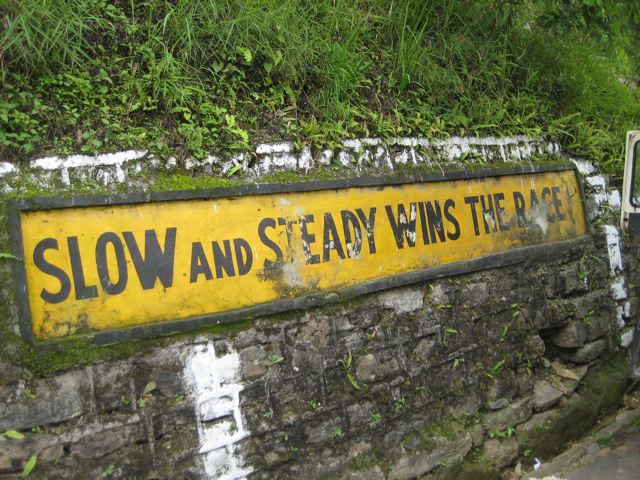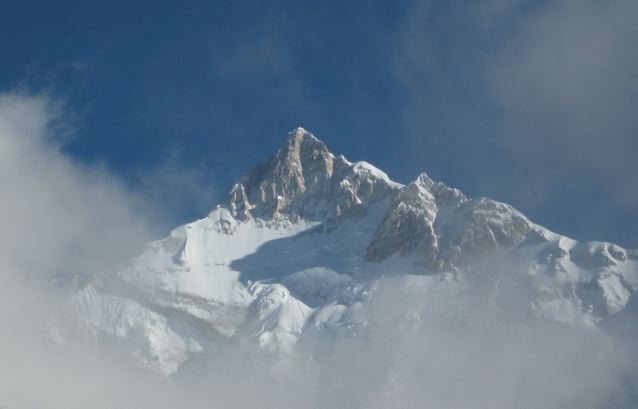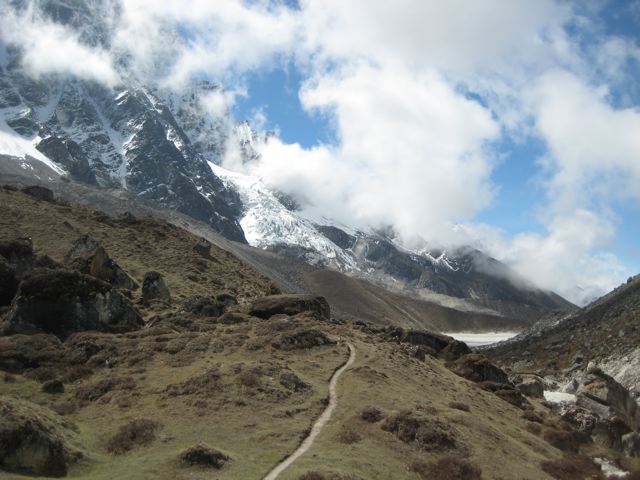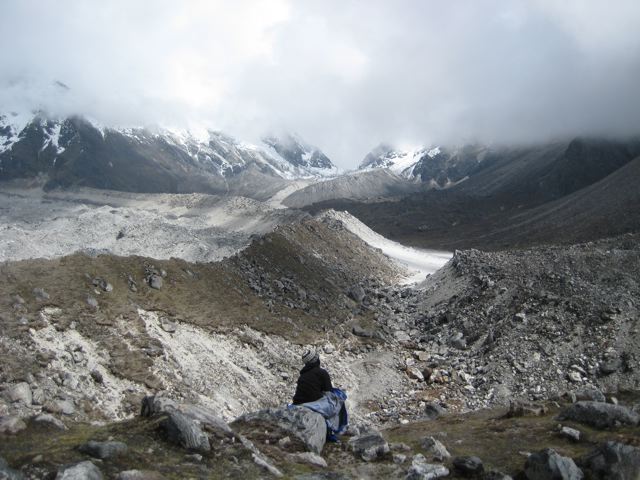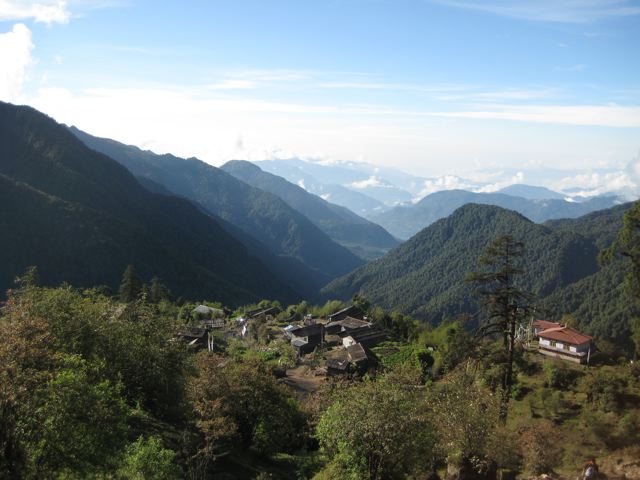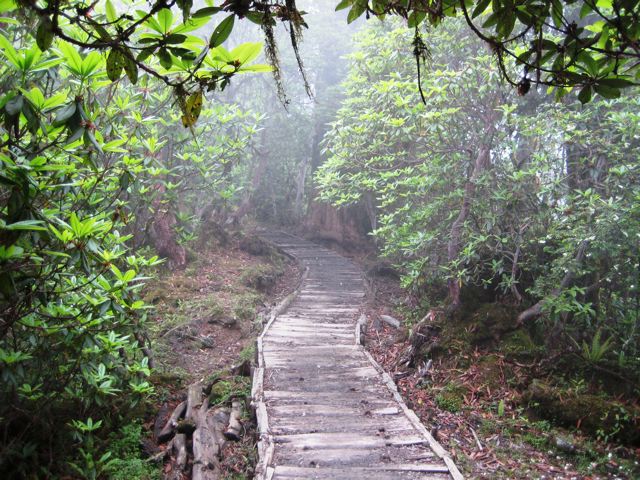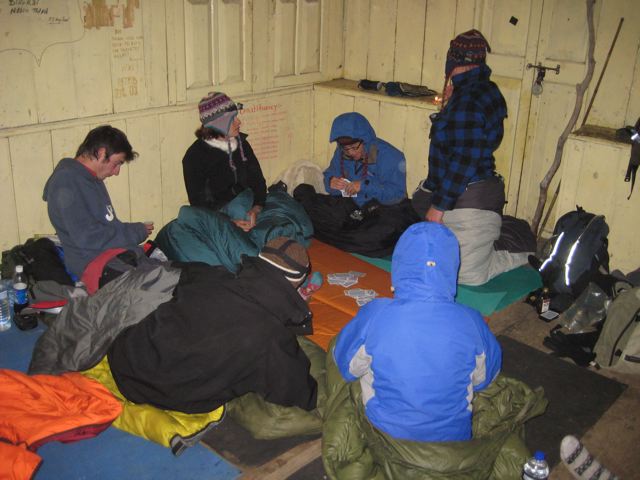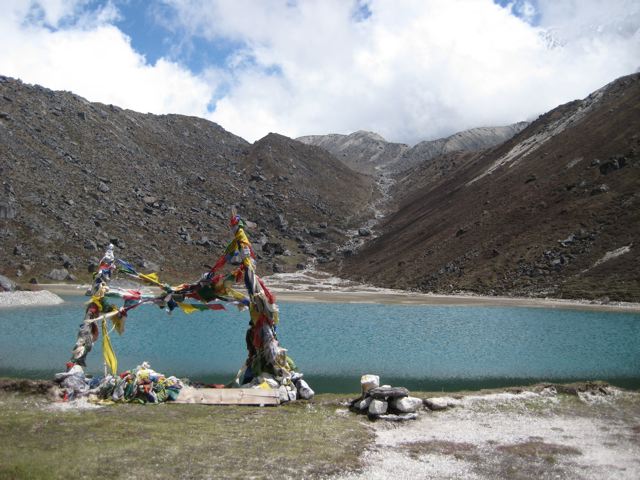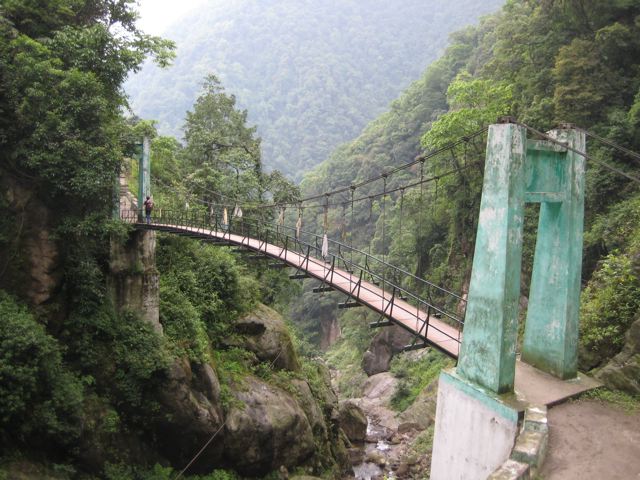
Yours truly on Goecha La.
Distance: 64 miles (103 km)
Average Time: 6 days
Difficulty: Moderate to challenging
Start / Finish :
- Out-and-back to Yuksom
Season:
-
- The monsoon season in Sikkim is between June and September.
- Best times for hiking are mid-April to May and October to mid-November.
Getting There & Away:
- Shared taxis run regularly from Gangtok to Yuksom.
- Along the way, look out for the ubiquitous road signs by the Border Roads Organisation (BRO). There are some classics.
Maps / Info:
- Officially speaking (as of 2008) it was necessary to do this trek with a guide/agency. Having always hiked independently, I was initially very reluctant. However, with no other option available, my friend and I managed to strike a deal with an agency in Gangtok, whereby they organized the necessary permits and we took care of our own food, itinerary, carried our own packs. For “official appearances” we were accompanied by an easy-going local guide from Yuksom. His name was Bijay.
- Unless you can find another way around it, I would recommend trying to do something similar. Otherwise, you will be locked into a set itinerary and basically hiking in accordance with the dictates of your agency, whose fundamental motivation is to stretch out the trek for as long as possible in order to make more money.
- Topographical map options: U502 series, 1:250,000 Kanchenjunga 45-3 & the Swiss Foundation for Alpine Research 1:150,000 Sikkim/Himalaya 64-76741. I have not personally seen the second map, and therefore cannot vouch for its usefulness one way or the other.
- I used the basic sketch map and trekking information contained in Lonely Planet’s Trekking in the Indian Himalaya.
Route / Conditions :
- For the most part, it’s a gradual ascent from Yuksom (1760m) to Goecha La (4940m). The trail is generally well defined and easy to follow.
- If you are not acclimatised to the altitude, it may be a good idea to factor in an extra day at Tsokha (3050m) and/or Dzongri (4020m).
- As you would expect at these altitudes, the nights can be pretty cold. Pack accordingly.
- The diversity of flora on this trek is amazing. You will pass through forests of pine, magnolia and rhododendrum trees, eventually ascending above the tree-line to reach the wildflower-filled alpine meadows above Dzongri.
- From Dzongri, the side trips to Dzongri la and the Rathong valley offer incredible views and the chance to further acclimatize.
- A pre-dawn start is necessary for the final push up to Goecha La. The clouds often start rolling not long after sunrise. Suck it up, put on all your warm clothes, strap on the headlamp and make that early start. The views are definitely worth it.
Sleeping:
- Indoor accommodation is available at the gorgeously situated Tibetan village of Tsokha.
- In addition, there are mountain huts at Dzongri and Thangsing.
Overview:
- Despite having to jump through the odd official hoop, this out-and-back trek is definitely worth the effort.
- Without a doubt, one of my favourite Himalayan treks.
Discover more from The Hiking Life
Subscribe to get the latest posts sent to your email.

